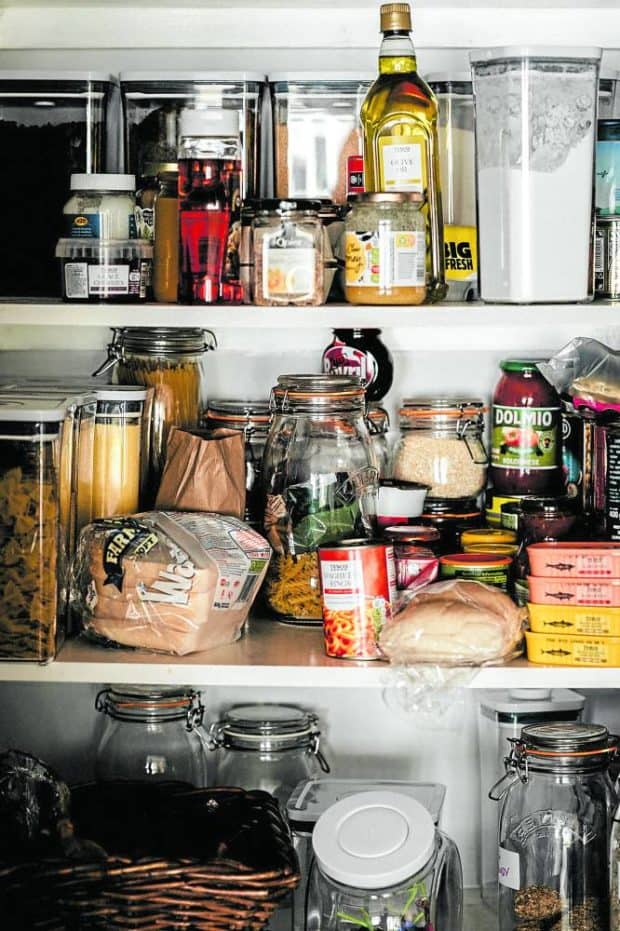By this time around, you’ve probably begun preparing your homes for another season of torrential downpours and, of course, the heavy flooding that may come with it.
We already know the drill, after all. As a country that gets some 20 typhoons every year, with some even more devastating than the others, most of us are probably quite familiar with all the to-do’s once the rainy season rolls in.
Just the same, however, it pays to be doubly prepared. Here’s a handy checklist that will help you ensure that your homes will weather the storm.

Check for roof damages, leaks
Your roof is obviously your first line of defense from the rain so any chance you get, check its condition. Cracks, exposed nails, rusts, as well as stains or discolorations are all signs of possible damages and leaks. Should you find these, have it repaired at the earliest possible time so you can avoid bigger damages inside your homes.

Clean/repair your gutter and downspouts
Unless you’re living in a vacuum, it can be expected—dry leaves, dirt and other debris are likely to clog your gutter and downspouts. Once clogged, the water may overflow and be diverted to other areas—under the roof or into the side walls, eventually damaging not only your interiors, but even the foundation of your homes.
It’s thus best to regularly clean your gutter and downspouts to ensure unhampered water flow. Also check if your gutters are up for replacement.
Trim the branches/trees surrounding your home
Besides preventing dry leaves from clogging your gutter, trimming the branches or the trees near your home can save you from a lot of damages. Some typhoons, as we have seen so many times in the past, come with strong, gusty winds that can easily break branches or even uproot trees. You can just imagine the massive damages should a large branch lands on your car or your roof, or somehow breaks a window in your home.
Weatherproof your windows, doors
When the typhoon comes with strong winds and heavy rains, water may easily seep in through gaps and leaks in your doors and windows. You need to address these immediately as constant exposure to moisture will likely lead to bigger damages, bigger repair bills and a much bigger headache.
It’s best to consult a professional but if you want to go the DIY route, you may use various materials in resealing your doors and windows like caulk, weatherstripping and foam tape. It’s a given that you should also check the condition of your doors and windows to see if these need replacing.

Consider buying a generator
If you have funds to spare, why not? As experience would tell us, a supertyphoon may lead to blackouts—either because the strong gusts of wind felled a transmission line or the massive flooding would necessitate the shutdown of a substation.
A portable emergency generator will be able to provide enough power to keep a few important lights and appliances running. Besides keeping you comfortable as you sleep at night, it’s also something we all need in this era when many students continue to study at home and many working professionals are still on a hybrid setup.
Check your electrical wirings
This is a must if you want to avoid fire or electrocution due to faulty wiring and other similar damages. Make sure to hire a professional electrician for the repairs so you don’t run the risk of incurring bigger damages in your home.
On your part, make sure to check if there are dangling or damaged wires; switch the power off before plugging or unplugging an appliance; and have worn sockets and switches replaced immediately.

Prepare an emergency pack
It’s always a good idea to have a supply kit so when disaster strikes and you can’t leave home, you’ll have ample stock to tide you over. Make sure to have an adequate stock of canned goods, bottled water, rice, medicines and other necessities.
Better yet, always have on hand an emergency backpack or a grab bag that will have a change of clothes for every member of the family, raincoats, flashlight or candles, a three-day supply of non-perishable food, bottled water, a first-aid kit, toiletries, a tool kit to open cans and turn off utilities, and a whistle. It may seem too much, but it’s always better to be safe and prepared than sorry.
If you like this article, share it on social media by clicking any of the icons below.
Or in case you haven’t subscribed yet to our newsletter, please click SUBSCRIBE so you won’t miss the daily real estate news updates delivered right to your Inbox.
The article was originally published in Inquirer.NET and written by Emilio Miguel S. Lee Ng.







More Stories
Vista Land Celebrates 50 Years with Sandiwa: An Event Honoring Leadership, Legacy, and the Filipino Dream of Homeownership
Vista Land Celebrates Love Month in Ilocos Region
Vista Land Bridges Cebuano Heritage and Progress with Valencia by Vista Estates